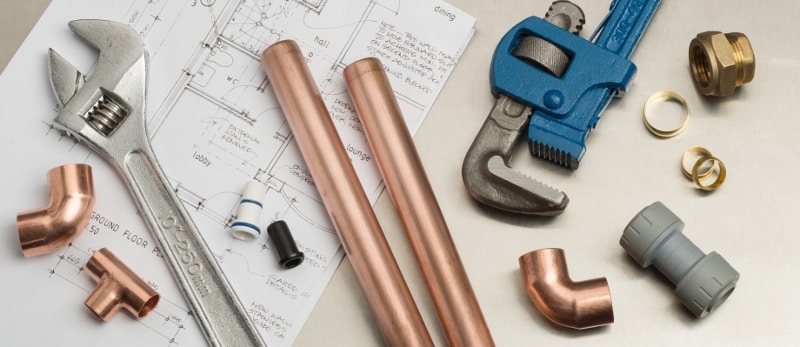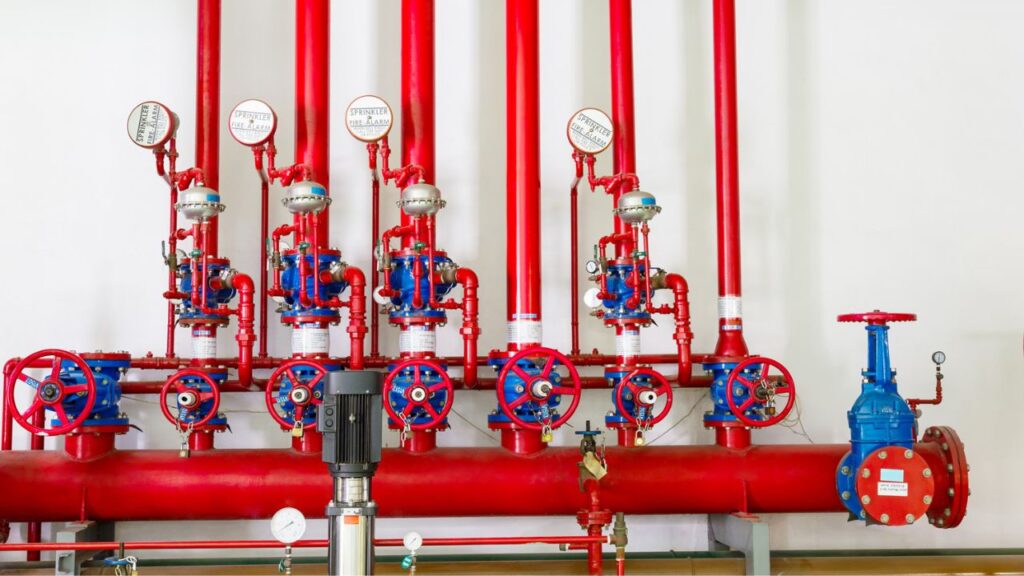What're your thoughts and feelings about Exploring Your Homes Plumbing Anatomy?

Comprehending how your home's pipes system functions is vital for every single property owner. From delivering tidy water for drinking, food preparation, and bathing to securely removing wastewater, a well-kept plumbing system is critical for your household's wellness and convenience. In this comprehensive overview, we'll explore the complex network that composes your home's plumbing and deal ideas on maintenance, upgrades, and taking care of common concerns.
Intro
Your home's plumbing system is greater than simply a network of pipes; it's an intricate system that ensures you have access to clean water and efficient wastewater elimination. Knowing its parts and how they collaborate can help you protect against expensive repairs and make certain whatever runs efficiently.
Basic Parts of a Pipes System
Pipes and Tubes
At the heart of your pipes system are the pipes and tubes that carry water throughout your home. These can be made from numerous products such as copper, PVC, or PEX, each with its benefits in terms of toughness and cost-effectiveness.
Components: Sinks, Toilets, Showers, etc.
Fixtures like sinks, bathrooms, showers, and bath tubs are where water is used in your home. Comprehending just how these components attach to the plumbing system assists in detecting issues and intending upgrades.
Valves and Shut-off Factors
Valves control the flow of water in your plumbing system. Shut-off valves are vital during emergencies or when you need to make repair services, permitting you to separate parts of the system without interrupting water flow to the entire home.
Water System System
Key Water Line
The major water line connects your home to the municipal water supply or a private well. It's where water enters your home and is dispersed to various fixtures.
Water Meter and Pressure Regulator
The water meter measures your water use, while a stress regulatory authority makes certain that water streams at a safe pressure throughout your home's pipes system, avoiding damage to pipelines and components.
Cold Water vs. Warm water Lines
Comprehending the difference between cold water lines, which supply water straight from the major, and hot water lines, which carry warmed water from the water heater, aids in fixing and planning for upgrades.
Water drainage System
Drain Pipes Pipeline and Traps
Drain pipes carry wastewater far from sinks, showers, and commodes to the sewer or septic tank. Traps stop sewage system gases from entering your home and also trap particles that can cause clogs.
Ventilation Pipelines
Air flow pipelines allow air into the drain system, stopping suction that could reduce drainage and trigger catches to empty. Appropriate ventilation is vital for keeping the stability of your pipes system.
Relevance of Correct Drainage
Guaranteeing correct water drainage avoids back-ups and water damages. Consistently cleaning drains pipes and maintaining traps can protect against expensive fixings and prolong the life of your pipes system.
Water Heating Unit
Kinds Of Water Heaters
Hot water heater can be tankless or standard tank-style. Tankless heaters warmth water on demand, while tanks store warmed water for immediate usage.
Updating Your Plumbing System
Reasons for Upgrading
Updating to water-efficient fixtures or replacing old pipelines can improve water top quality, decrease water costs, and boost the value of your home.
Modern Plumbing Technologies and Their Benefits
Explore innovations like smart leakage detectors, water-saving commodes, and energy-efficient hot water heater that can save money and lower ecological influence.
Price Factors To Consider and ROI
Determine the in advance costs versus long-term savings when considering plumbing upgrades. Several upgrades pay for themselves through reduced utility costs and less repair services.
Exactly How Water Heaters Link to the Pipes System
Comprehending how water heaters attach to both the cold water supply and warm water circulation lines assists in diagnosing problems like inadequate hot water or leakages.
Upkeep Tips for Water Heaters
On a regular basis flushing your water heater to remove debris, checking the temperature level settings, and inspecting for leakages can prolong its lifespan and boost power efficiency.
Typical Plumbing Concerns
Leakages and Their Causes
Leakages can happen because of aging pipes, loosened installations, or high water pressure. Addressing leakages quickly prevents water damages and mold development.
Clogs and Clogs
Blockages in drains and commodes are typically caused by purging non-flushable items or a build-up of grease and hair. Utilizing drainpipe displays and being mindful of what goes down your drains pipes can stop blockages.
Signs of Pipes Problems to Expect
Low tide pressure, slow drains pipes, foul odors, or abnormally high water costs are indications of potential pipes issues that should be resolved immediately.
Plumbing Upkeep Tips
Routine Evaluations and Checks
Schedule annual pipes assessments to catch problems early. Look for indicators of leaks, deterioration, or mineral accumulation in faucets and showerheads.
Do It Yourself Maintenance Tasks
Simple jobs like cleaning tap aerators, checking for commode leaks making use of dye tablet computers, or insulating revealed pipelines in chilly environments can stop major plumbing concerns.
When to Call a Professional Plumbing
Know when a pipes issue needs specialist proficiency. Attempting complicated repair services without correct knowledge can cause even more damage and higher repair service costs.
Tips for Decreasing Water Usage
Basic habits like repairing leakages without delay, taking much shorter showers, and running full lots of laundry and recipes can conserve water and reduced your utility expenses.
Eco-Friendly Pipes Options
Consider lasting pipes materials like bamboo for floor covering, which is durable and eco-friendly, or recycled glass for countertops.
Emergency Readiness
Steps to Take During a Pipes Emergency situation
Know where your shut-off valves are located and exactly how to turn off the water system in case of a ruptured pipe or major leakage.
Relevance of Having Emergency Get In Touches With Convenient
Keep get in touch with info for neighborhood plumbers or emergency services readily available for fast action throughout a pipes crisis.
Environmental Effect and Preservation
Water-Saving Components and Devices
Installing low-flow faucets, showerheads, and bathrooms can dramatically lower water usage without sacrificing performance.
DIY Emergency Fixes (When Applicable).
Short-term fixes like utilizing air duct tape to spot a dripping pipeline or positioning a bucket under a dripping faucet can reduce damage up until an expert plumbing technician gets here.
Verdict.
Comprehending the composition of your home's pipes system encourages you to keep it properly, conserving money and time on fixings. By adhering to normal upkeep regimens and remaining notified regarding modern plumbing innovations, you can ensure your plumbing system runs successfully for years to come.
HOW YOUR PLUMBING SYSTEM WORKS
Which Pipes Do What?
- Blue lines = fresh water supply entering the building
- Red lines = hot water supply entering the building
- Grey lines = pipes carrying waste away from the building and venting pipes carrying gases away from the building (through the roof)
YOUR MAIN PLUMBING SYSTEMS
There are two main plumbing systems that support your home s basic plumbing needs one that brings clean water into your home, and one that sends dirty water away from your home. Connected to the toilet, bath, shower, and other faucets in your home, these two systems keep your water flowing in the right directions.
ACCESSING FRESH WATER
Fresh and clean water is brought into your home through the main water supply line . Filtered through one pipe, this water is pressured to flow into the various fixtures in your home at any given time.
This water can be sourced from a well located on your property, a pond or river (mostly cottages), or, as in most cases, from the city s municipal water treatment centre. However, it is important to note that water that is untreated, such as the water siphoned from ponds or rivers, may not be safe to drink. Personal water supplies always need to be treated for hardness and contaminants before consumed.
MUNICIPAL WATER SUPPLIES
- Improve taste and odour
- Remove sediment
- Eliminate hardness
- Reduce chlorine
COLD WATER SUPPLY VS. HOT WATER SUPPLY
Cold water flows into your home or building through the service line, which then distributes hot or cold water to your fixtures. This line is most commonly run through a central column that runs floor to floor. Hot water runs in short and straight pipes as the longer the pipeline, the more heat that will be lost in the transfer. Having shorter pipes also allows residents to access hot water more quickly.
WASTE WATER SYSTEM
Your wastewater system is divided into two parts pipes that send wastewater away from your home and venting pipes that send sewer gas away from your home. Sewage water travels through pipes that flush the water and waste towards local sewers that are operated and managed by your city or town. Most sewer systems rely on gravity to move the wastewater to where it needs to go.
The further away from your toilet or sink, the larger wastewater pipes become. This allows for waste to be disposed of from various parts of your home or business at once without pipe blockages. The angle and flow of these pipes are also essential for keeping your waste pipes clear of build up.
https://harrisplumbing.ca/how-your-home-plumbing-system-works/

Do you enjoy more info about Plumbing Installation 101: All You Need to Know? Create a review below. We will be glad to know your feelings about this blog post. We are looking forward that you visit us again in the future. So long as you liked our blog post if you please be sure to share it. Thanks a bunch for being here. Revisit us soon.
Article
Comments on “A Guide to Your Property's Plumbing System Anatomy”